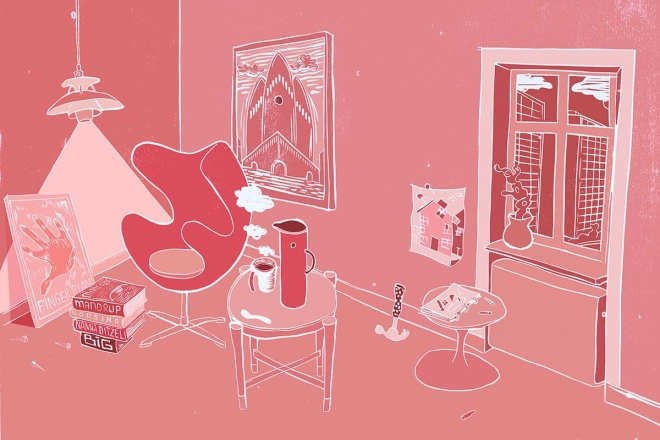After years of repeated requests from visitors, the Danish Architecture Center team takes its hand at delivering a comprehensive but manageable review of Danish design history, from the Viking era to present day.
By Michael Wood, AAO Executive Director
August 2023
During our visit to Copenhagen, we were excited for the chance to take in the latest exhibition at the Danish Architecture Center (DAC), So Danish!, and what amounts to the organization’s first permanent exhibit. Housed in the Center’s well-equipped but compact Golden Gallery, the show adheres to a sturdy timeline formula and sets out to demonstrate—time and again—how the Danes have shaped architecture throughout the ages and how architecture has, in turn, shaped the Danes. The sheer size of the task (500+ years of history) and linear layout makes for a crowded exhibition hall but it is pleasant enough to peruse and rewarding of multiple visits.
The exhibit was produced by a team of five and headed up by DAC curator Jesper Værn Jensen, who devoted about 18 months researching, scripting, and securing the show’s plentiful trove of artifacts. The DAC does not maintain an archive, so all the objects are on loan, some of which are one-of-a-kind objects and prints. While the overall project size is large and complex, for exhibition-makers serving general audiences, there are a number of highlights and lessons that can apply to work at nearly any scale or price point.
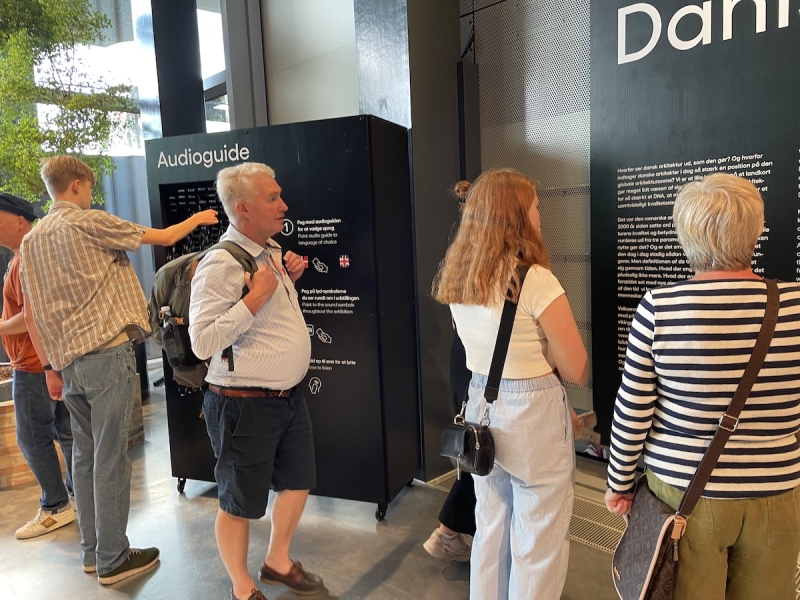
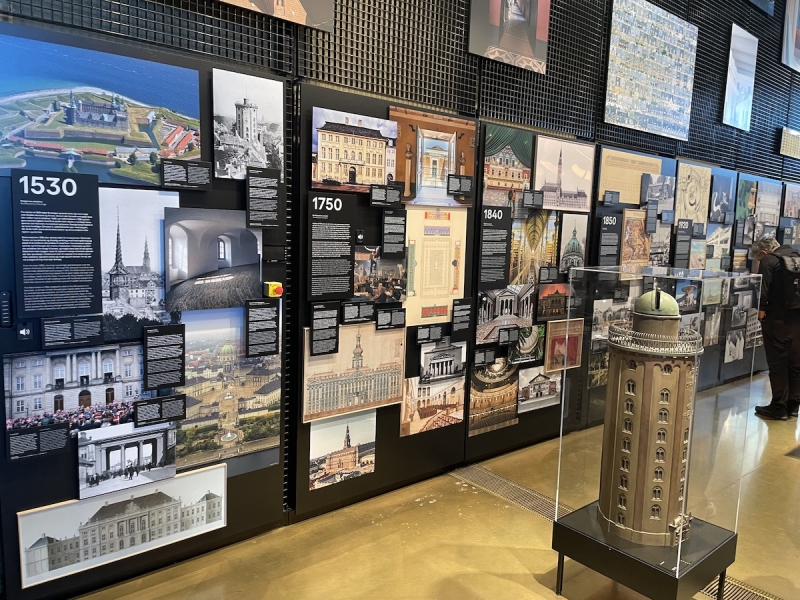
With only 300 square meters (3,230 square feet) of gallery space, the DAC team cleverly deploys a split narrative with a free audioguide accompaniment. The narrative assist sketches out major historical events and broader viewpoints and mores that govern Danish culture, while the mixed media of artifacts, images, and videos affixed to the walls brings specificity and abundant examples that illustrate how the Danish outlook influences its design work.
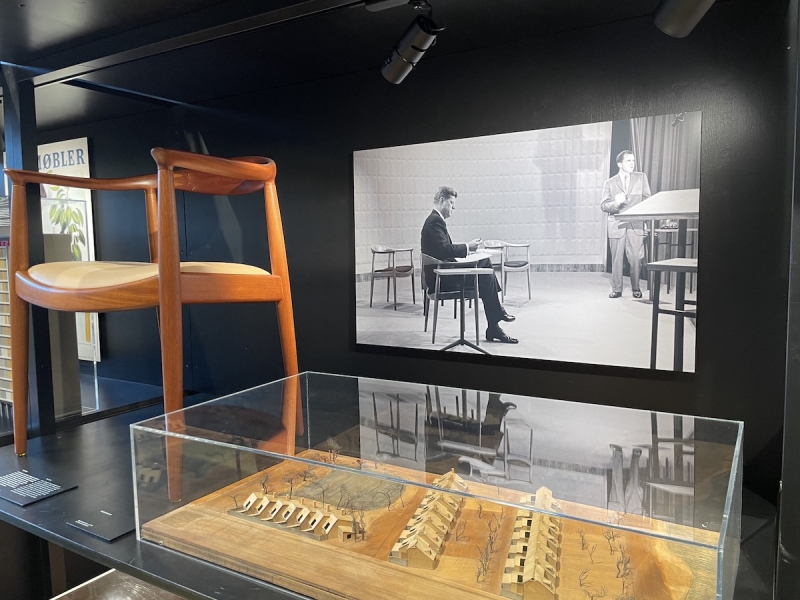
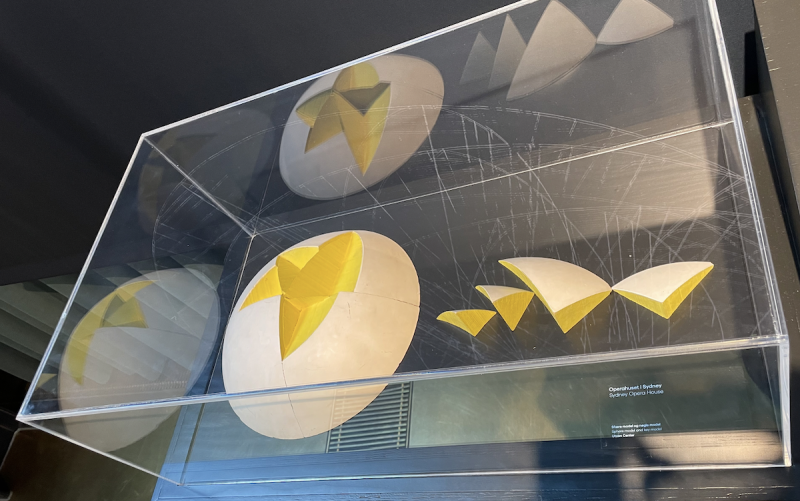
Again, in an effort to find common ground for a broad audience, the exhibit celebrates moments when Danish design has declared itself on the world stage, including this example of the Hans Wegner chair that appeared in the first televised US Presidential debate with Nixon and Kennedy. Or, with the Sydney Opera House, where some deft model selection manages to draw audiences deeper into the not-so-obvious thinking behind Utzon’s instantly recognizable design.
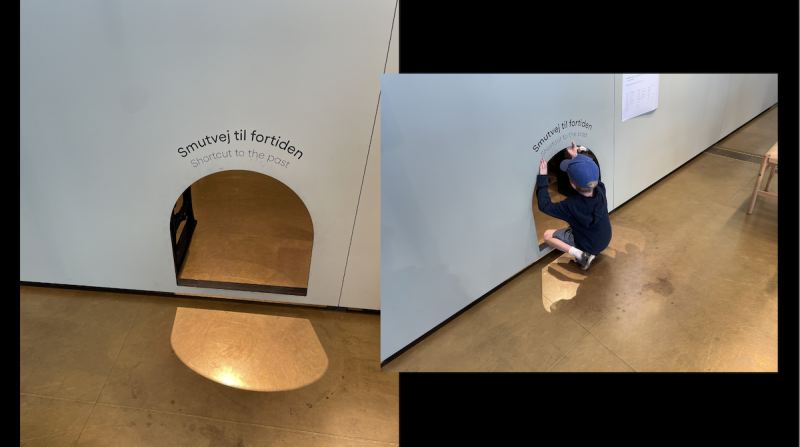
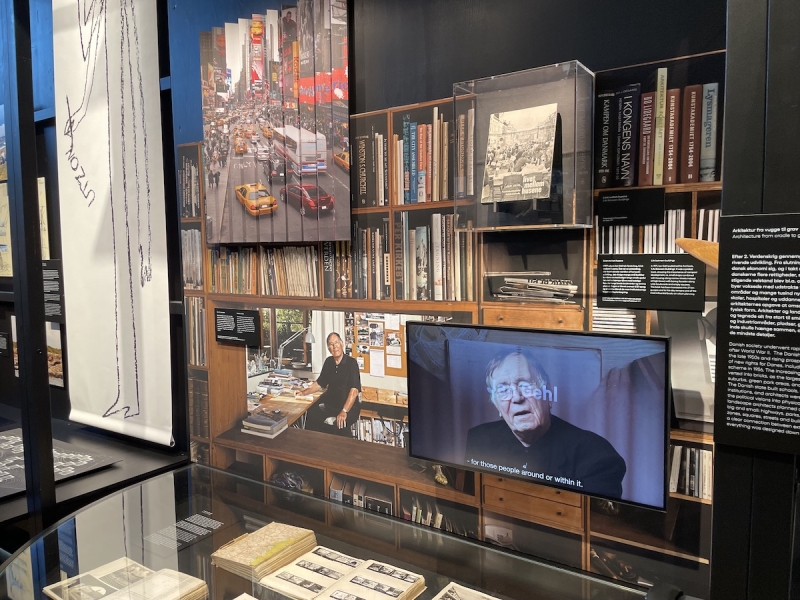
The exhibit also finds opportunities to break up the regimentation of the timeline by injecting opportunities for diversions like this invitation to younger audiences to explore the room, or the scene-setting bookshelf that succinctly shows the impact of Jan Gehl’s migrating ideas for even the hastiest gallery visitor.
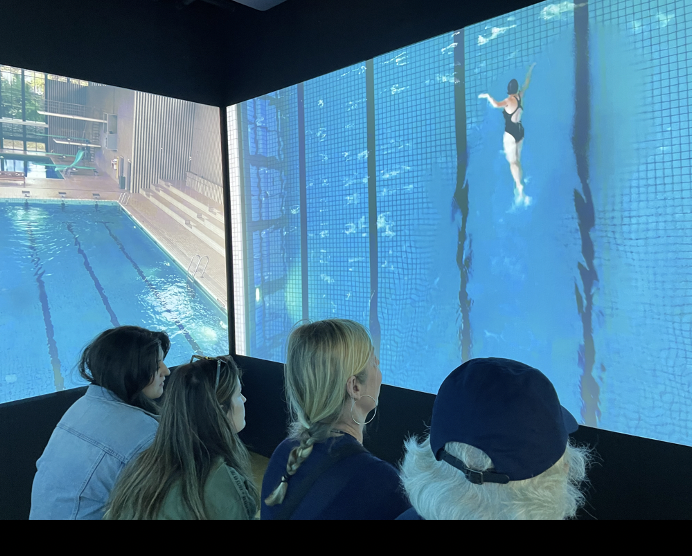
Not without a few experiments, the DAC also chose to commission several new short films by Astrid Maria Rasmussen highlighting critically-lauded structures by Danish architects over the past several decades, each of which appears in an immersive multi-surface projection room. The projects range from one-of-a-kind experiments like EFFEKT’s Forest Tower to a beloved natatorium designed by Karen and Ebbe Clemmenson, showing how design supports and enhances everyday life.
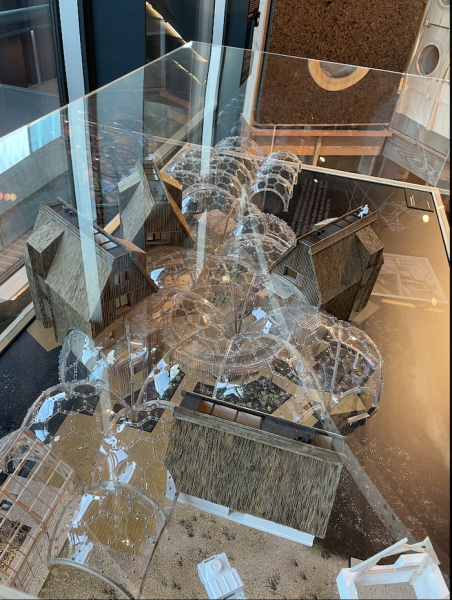
The exhibit ends with a series of design interventions and research experiments by current Danish practitioners exploring ways to advance sustainable design. Pictured above is a speculative intervention by Atelier Kristoffer Tejlgaard imagining a farming cooperative with common spaces formed by lightweight timber construction and bioplastic domes.
All in all, the exhibit puts together several memorable experiences for audiences entirely new to architecture or for those looking to take away deeper messages about the sensibilities that drive Danish design.

